The main IJN fighter in 1940
The Mitsubish A5M (allied designation “claude”) was until the arrival of the legendary “zeke”, the main Japanese Imperial Navy Fighter. Designed alongside the Army Fighter Nakajima Nakajima Ki-27 “Nate”, this was the first generation monoplane of this type, supremely agile, relatively tough, but still transitional with its fixed undercarriage and open cockpit. Despite of this, the “Claude” equipped all IJN aicraft carriers until 1940 and was massively used in China, seeing active combat in some areas until mid-1943.
“Japan can’t do planes, just mediocre imitations”
In the mid-1930s, high-speed monoplane fighters started to enter air forces in increasing numbers despite many aviation specialists and manufacturers still believed just was just a “fad” and that biplane offered more advantages. Biplanes were the mainstay of fight deck aviation, with perhaps te exception of the French Bearn’s parasol monoplane Dewoitine 371. In that case, due to the limitation of landing speed due a small flight deck.
By 1935 however a new generation of fixed-wheeltrain, open cockpit transitional cantilever (low wing) monoplanes appeared, for the Air Forces at first. It was not long before carrier-based fighters appeared. The world’s first one appeared from Japan, a country believed to have backwards factories and designers that were only able to copy Western designs. The fallacy of this was realized when Westerners fought in Chiang-Kai-Chek’s aviation during the second sino-Japanese war. Reports came back of a strain of victories won by a small, super-agile A5M, of which the West knew little.
With significant gaps in requirements for land and ship fighter aviation, efforts concentrated on high-speed single-seat monoplanes. But these requirements were still contradictory, for taking off and landing, with a low specific wing loading, and high structural strength. The switch to all-metal high-speed monoplanes faced many difficulties both in Japan and abroad.
Development start: 1935 IJN specs for a carrier-borne fighter
In 1935, the biplane Nakajima I-95 biplane, offering 350 km/h, was adopted by the Imperial Japanese Navya as the A4N. The Main Directorate of Naval Aviation came to the conclusion a top speed of onlu 350 kph was going to be soon obsolete. So requirements based on a new engine, led to tactical and technical No.9 Navy (“9-Si”) specifications. They required a a high-speed monoplane, able of speed up to 400 km/h. It was restricted to companies working already with the Navy and wit a recoignised knowhow, Mitsubishi and Nakajima.
The Admiralty No. 9 requirements called for the following:
Speed over 350 km/h (190 knots) at an altitude of 3 km (9,842)
Climb 5,000 meters (16,400 feets) in 6.5 minutes.
Fuel capacity over 200 gasoline liters
A pair of standard machine guns
Span less below 11 meters (36 feets), length below 8 meters (26 feets)
This specification was offered to Mitsubishi and Nakajima, abd were ready by the fall of year.
Design development
Ka-14 Prototype

Mitsubishi Ka-14 prototype
The A5M carrier-based fighter was designed on the basis of the 9-Shi technical requirement issued at first in February 1934. It determined only basic data for the new aircraft, without limiting the layout. This made it possible for superstar designer Jiro Horikoshi, leading the design team from Mitsubishi Jukoge. He wanted right away a very innovative model, but sketched several options, including one-and-a-half-plane (sesquiplane) with small lower wings, and a fully cantilever monoplane designated Ka-14. The desire to increase the maximum flight speed with span restrictions due to aircraft carrier’s cargo lifts led a high wing load of 77.2 kg/m2. The Ka-14 was designed very quickly, in just 11 months, the first prototype being ready at that point, with which such a tight construction control it ended even lighter than initially precognized.
Based on the lightest structure, with the more suitable power specs, the Nakajima “Kotobuki” 5 radial engine (developing up to 600hp) was chosen, mated to a two-blade metal propeller. The undercarriage was non-retractable with wheels covered by drop-shaped fairings. According to designers, a retractable undrrcarriage would have gave a speed increase of only 3% while significantly complicate the undecarriage and raise its weight. The prototype was made with all-metal construction, combining high strength and lightness combined with good aerodynamics, and gull wings. It promised a big leap forward in flight performance.
On February 4, 1935, test pilot Kajima made the maiden flight onboard the Ka-14 prototype. In factory tests, the prototype showed a speed of 444 km/h (xx mph) at an altitude of 3200m (xx feets). Which was way above the required 350 kph. Other requirements were also all exceeded, so the representatives of the fleet did not even believe the company and asked control tests by their own naval pilots. The first to test the Ka-14, Kobayashi, flew at the Kagamigahara base, and obtained an amazing 449 kph out of the prototype, blowing away all the navy’s expectations.
Five other Prototypes
The second prototype was revised by designers as given flaps to improve its landing qualities, very important for deck landing and lengthened the fuselage, installing a new gearless engine Kotobuki 3 with a maximum output of 715 hp plus the wing was in “reverse gull” was replaced by a more standard cantilever one. The result was improved handling and stability, without compromising flight performance. Speed was not everything and dogfighting was the main requirement.
The Ka-14 was more agile than many biplanes and in Japan, maneuverability was traditionally highly valued, but insufficient on the Ka-14. Pilots of the Yokosuka Experimental Squadron conducted training air battles with the Ka-14 and their conclusion was that they preferred the proven Nakajima A4N1.
Only the arrival of a generation of younger pilots preferring speed and vertical evolutions (contrary to the traditional instructions) made it possible to unleash and reveal the true potential of the new fighter. In the fall of 1936, the Ka-14 was eventually adopted as the “Type 96 Model 1 carrier-based fighter” or A5M1. The serial A5M1 differed from the second prototype by an increased fuel reserve, slightly altered engine hood, the 2KAI-Ko Kotobuki rated for 630 hp. The outlines of the upper fuselage and vertical tail also changed. The armament now consisted of two standard 7.7 mm type 89 machine guns, noth located at the top of the fuelage. The undercarriage was redesigned, provided a better suspension and a rack to add a droppable gas tank under the fuselage. At first the drop tank was half-buried in the fuselage. Tactical unit development of the new fighter with close collaboration of combat pilots started in the first months of 1937 and the A5M officially entered the 13th air squadron as its first active units.

Poster dedicated to the Mitsubishi A5M, first IJN monoplane fighter. Available in caps, laptop skins, sleeves, ipad & phone skin, prints, postcards, mug, bag, pillow, pouch… Help Support us !
Design choices

Final production A5M1, codename “claude”
The main concept behind the fighter was developed at meetings with specialists from the Navy’s Main Directorate of Aviation and the head of the Navt department, Rear Admiral I. Yamamoto. To lighten the fighter and increase its maximum speed, the mandatory ship-based operation specs were willfully excluded from the initial design, in ordere to reach max performances right away. The Mitsubishi Ka-14 represented a brand new generation of aluminum monoplanes for the Imperial Japanese Navy and D. Horikoshi low-wing layout, fixed landing gear, open cockpit, low cantilever wing in “reverse gull” configuration were all brand new. The marriage of this base to the Kotobuki series 9-cylinder radial air-cooled Nakajima engine seemed to be a perfect match. The two 2 synchronized AP-89 MGs seems “light” to WW2 standard, but they were in light of interwar standard fighter armament, inherited from WWI. To improve aerodynamic qualities for the first time in the Japanese aviation industry, blind riveting was used for the entire aircraft. To reach the level of the A5M for pre-production, Mitsubishi won approval of the construction of 6 prototypes, only the first of these fitted with gull wings.
Comparison with the A4N and compromise
In the winter of 1935, with a top speed rated at 450 km/h (243 knots) and 5,000 m reached in 5 minutes. 54 sec. D. Horikoshi created with the Ka-14 the best-performing plane ever built in Japan, but it was not agile, nor fit for carrier-based duty, not having the standard Navy kit installed. There was competition, and the Ka-14 competed against Nakajima’s Ki-11 KB (I-95) soon dropping out of it as the problem with the wing struts compromised its controllability.
The Navy, like the Ground Forces eventually rejected all future Nakajima biplane fighters in favor of the Mitsubishi. The Nakajima’s performances and characteristics were still superior to specs, but the overall impression was that the Mitsubishi was still wa superior to the Ki. 11. In the summer of 1935, Minoru Genda’s squadron tested the Ka-14 “to the bone”, and noted its speed, rate of climb, and especially its stability when firing were all extremely important for air combat.
He noted its lack of maneuverability in comparison with the I-95, and when soon at the head of the department of the Navy, Yokosuka (T. Onishi) made a proposal to keep both models, the A4N and A5M, in service. Listening opinion of experienced pilots, the Aviation Directorate eventually organized a training battle between both models, flew by the most experienced pilots at Yokosuka base. They all became ardent supporters of the monoplane, speaking ofits outstanding performances over Kagamihara airfield, on very high throttle response.
The final choice of engine

Nakajima Kotobuki Hikari
Despite the very positive attitude of fighter pilots, fine-tuning for adoption into service dragged on for almost 3 years. The main reason were aerodynamics fixes, problems with ‘floating’ when deck landing, and yawing at high angles of attack, plus the choice of a suitable engine. Aerodynamic design problems led to the abandonment of the reverse gull wing for a conventional straight wings and from the third prototype, the gearless power plant rated for 640 hp were installed. Take-off weight was superior but the new prototype still showed the same performances data, but with safer handling. In total, 4 prototypes of the new cantilever fighter with the Nakajima Kotobuki/Hikari radial, 9-cyl. engine were tested as well as the in-house Mitsubishi-Venus (Kinsei) rated at 730 hp.
Comparative test led to the adoption of the Nakajima engine for serial production. The Kotobuki was derived from the 1920s Bristol Jupiter VII (on the IJN tested Gloster Gamecock), combined with a purchased Pratt & Whitney Wasp 9-cylinder radial. The 450 PS “Kotobuki” (“longevity”) was first tested by the Nakajima A2N, then approved on the Nakajima C3N in 1931 and later lightened, called the “Hikari (light)” model, adopted by the A5M in its 2-Kai-1 585 hp (436 kW), 2-Kai-3 610 hp (455 kW) and 3-Kai 710 hp (529 kW) variants.
Production
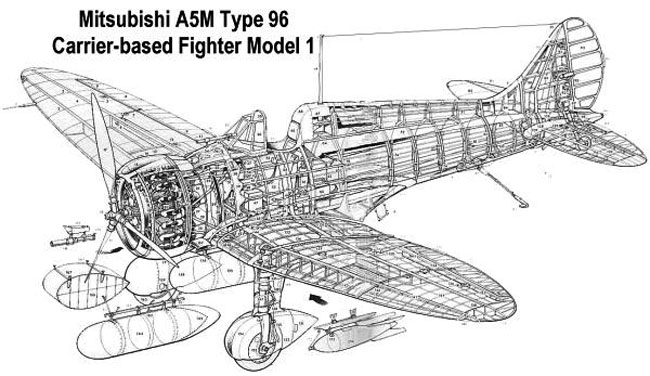
Together with the DB-96 version, long-range torpedo bomber adopted the same year, the I-96 (A5M) was the first independently designed plane created by the Mitsubishi Design Bureau (no British assistance at any level until in the 1920s). Despite some difficulties, the Navy’s Main Directorate of Aviation decided to accept the I-96/A5M and by the fall of 1936, it went to more factory tests, with Navy standard additions, until an order for serial production was obtained. The production amounted to 1,100 units plane, with a production run from 1936 to 1940 in the Mitsubishi-Nagoya plant, of 788 planes, and 39 afterwards at the Watanabe plant, until 1942. The former indeed swapped on the A6M in between. Also, Navy Aircraft factory N°21 at Omura built a further 264 A5M5 until 1944. It looks amazing that a 1935 model was produced that late in WW2 despite being obsolete, but this last batch was entirely made of double command/cockpit advanced training models.
A5M design

tech drawing of the A5M4, 3 views, cc
Single-engine all-metal low-wing aircraft. The fuselage of semi-monocoque oval cross-section, elliptical wings and tail of the classic scheme. The fuselage and wing are all aluminum, and the control surfaces are covered with cloth. The cockpit is open (some of the cars of the second modification had a closed canopy. The chassis is three-point fixed with the main struts closed by aerodynamic fairings. All modifications, except for the second, were equipped with aircraft engine options. ), on the second modification (2.98 m). The gas tank capacity is 330 liters, on the second modification PTB with a capacity of 160 liters. Armament (except for the experimental cannon vehicle) from the synchronized AP-89 (Vickers-Arisaka 7.7 mm). modifications had wing pylons for OFAB-30.
Armament
Guns: Two 7.7 mm (0.303 in) Type 97 aircraft machine gun fuselage-mounted, synchronized light machine guns. They fired through the engine cylinders and propeller at about 1 and 11 o’clock, with interruptor gear.
Bombs: Although not their primary vocation the A5M could carry two 30 kg (66 lb) bombs underwing, or a single 160 l (42.27 US gallons, 35.20 imperial gallons) drop-tank.
Service debuts


The A5M1 in serial production was followed by the A5M2-Ko with the Kotobuki 2KAI-3-Ko engine in an elongated hood, with a three-blade propeller and an even more developed gargrot, A5M2-Otsu with a closed cockpit and a Kotobuki engine 3. From the closed cockpit, which constrained review, quickly abandoned, replacing it with an enlarged visor. The Mitsubishi plant in Nagoya at that time was joined by the fleet’s aviation arsenal in Omura, where the assembly of the A5M2-Otsu was also established. A number of A5M variants were built that did not go into series, such as the A5M1-Ko armed with a pair of 20-mm Oerlikon cannons and the A5M3-Ko with a French Hispano-Suiza 12Xcrs inline engine and a 20-mm cannon that fired through the hollow propeller shaft. Two experimental modifications, named Ki.18 and Ki.33, were manufactured for the Army Air Force, but they could not compete with aircraft from other companies.
Modifications
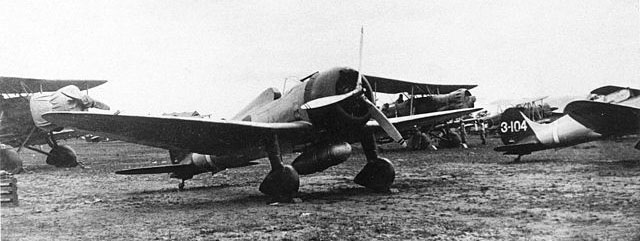
A5M2b, immat. 3-104, 1938
Serial production A5M1: Kotobuki-2 engine (580 hp) or Kotobuki 2M (585 hp), and synchronized Type-89 MGs (500 rds.)
A5M2 early type: Kotobuki-M (610 hp), three-bladed metal prop.
A5M2 medium type: Kotobuki-3 (640 hp), closed cockpit, OFAB-30 droppable tank rack
A5M2 late type: Kotobuki-4 (710 hp) OFAB-30 rack or PTB 210
A5M2K: About 102 by Navy plant No. 21
A5M3 early type: Two Oerlikon FF 20 mm air cannons
A5M3b with Hispano-Suiza HS.404 engine-cannon (610 hp, 20 mm)
Variants
Ka-14: Six prototypes with various engines and design modifications.
A5M1: Navy carrier-based fighter, Model 1: first production model with 633 kW (850 hp) Kotobuki 2 KAI I engine.
A5M2/2a: Model 21: More powerful engine.
A5M2b: Model 22: First production examples with NACA cowling and 477 kW (640 hp) Kotobuki 3 engine.
A5M3a: Prototypes with 448 kW (601 hp) Hispano-Suiza 12 Xcrs engine.
A5M4: Model 24 (ex-Model 4): The A5M2b with different engine, closed cockpit, additional detachable fuel tank. The last production models (Model 34) with Kotobuki 41 KAI engine.
A5M1-A5M4: 780 constructed by Mitsubishi. 39 constructed by Watanabe, 161 manufactured by Naval Ohmura Arsenal.
A5M4-K: Two-seat trainer version of A5M4, 103 constructed by Naval Ohmura Arsenal.
Ki-18: Mitsubishi Ki-18, Single prototype land-based version for IJAAF, based on the A5M. 410 kW (550 hp) Kotobuki 5 engine.
Ki-33: Mitsubishi Ki-33, Two prototypes, a development of Ki-18 with a different engine, and closed cockpit.
Total Production (all variants): 1,094
About the Ki-18

In 1934, Mitsubishi developed a prototype for IJN, the Ka-14 9-Shi, showing outstanding performance, so much so that with Navy’s consent, the Army placed a order for a modified version, in order to be evaluated. It was soon designated Ki-18.
Like the Ki-14 it was a low-wing monoplane, all-metal, however fabric-covered control surfaces. Its engine was the Nakajima Kotobuki-5, a nine-cylinder radial rated at 410 kW (550 hp) taking off and up to 447 kW (600 hp) at 3,100 m (10,170 ft) with the same two-blade, fixed-pitch, but this time wooden propeller.
From the second Ka-14, the inverted gull wing had been modified into a straight model the Ka-18 retook, and it had an enlarged rudder, a larger landing gear also with spats and different engine cowling. The direction of the throttle was adapted to Army practice (reversed) while the machine guns were Army models 7.7 mm (.303 in) Type 89 machine guns.
The Ki-18 first flew in August 1935 at the Tachikawa Air Technical Research Institute, and later at the Akeno Army Flying School. By early 1936, the engine was replaced: The new Nakajima Kotobuki 3 (477 kW/533 kW (715 hp) at 2,800 m (9,190 ft)) was installed, and the Ki-18 reached 444 km/h (276 mph) at 3,050 m (10,010 ft), climbing also at 5,000 m (16,400 ft) in 6 minutes 25.8 seconds, which the army delighted for.
However in the end, of the Akeno Army Flying School gave the Ki-18 a very high recommendation and pushed for its production, the Army Air Technical Research Institute still rejeted it as being a Navy design, vehemently ignoring the data and instead recommended a new competition with Nakajima, Kawasaki and Mitsubishi, and later cancelled as the Kawasaki K-10 just entered production since a year and replacement was estimated “too soon”. The petty bickering of the Army cost Japan a “common fighter” that would have been a better basis for future developments and less taxpayer’s waste overall. The Competition did took place and from it emerged the 1936 Nakajima Ki-27 (allied codename “Nate”), virtually a clone of the A5M, to the point at some point the US intel thought they were the same. Some 3,368 were produced, mostly based in China when WW2 broke out.
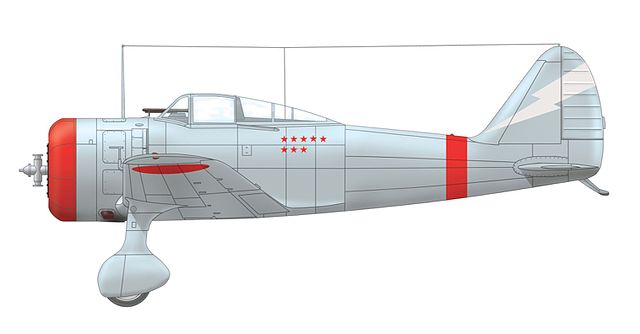
The “early A5M”. After the rejection of the Ka-18, the Army made a new competition and chose the very similar Nakajima Ki-27 “Nate” (here the personal plane of the army ace Kenji Shimada, commander of the 1st Chutai of the 11th Sentai, Battle of Khalkin Gol June 1939).
About the Ki-33

Not being rebuffed by the rejection of the Ki-18, in the new competition ordered by the Army, pitting the three main Japanese manufacturers based on new army specifications for a monoplane fighter to replace the Kawasaki Ki-10 led in mid 1935 Kawasaki, Mitsubishi and Nakajima ordered for a prototype each. Mitsubishi’s Ki-33 by the time was busy setting up both production of the A5M fighter and G3M bomber and lacked the design capacity to develop abrand new figher. Even though the Ki-18 was rejected, the base design was retaken, with a main changes the Nakajima Ha-1-Ko engine rated at 555 kW (744 hp), and aft-sliding canopy, raised aft fuselage decking and modified vertical tail surfaces. Two were built, completed in June 1936, tested in November, until the spring of 1937, from which the Ki-27 emerged as the winner on grounds of agility.
Detailed specs
A5M4 1938 |
|
| Crew: | 1: Pilot |
| Fuselage Lenght | 7.565 m (24 ft 10 in) |
| Wingspan | 11 m (36 ft 1 in) |
| Wing area | 17.8 m2 (192 sq ft) |
| Height | 3.27 m (10 ft 9 in) |
| Airfoil type | B-9 mod. (16%); tip: B-9 mod. (9%) |
| Empty weight: | 1,216 kg (2,681 lb) |
| Max takeoff weight: | 1,671 kg (3,684 lb) |
| Propeller: | 3-bladed metal propeller |
| Engine: | Nakajima Kotobuki 41 or 41 KAI 9-cylinder air-cooled radial 585 kW (785 hp) at 3,000 m (9,843 ft) |
| Top speed: | 435 km/h (270 mph, 235 kn) at 3,000 m (9,843 ft) |
| Climb rate: | 3,000 m (9,843 ft) in 3 minutes 35 seconds |
| Endurance: | 1,201 km (746 mi, 648 nmi) |
| Service ceiling: | 9,800 m (32,200 ft) |
| Wing Loading: | 93.8 kg/m2 (19.2 lb/sq ft) |
| Power/mass: | 0.3161 kW/kg (0.1923 hp/lb) |
| Armament | 2× 7.7 mm (0.303 in) Type 97 MGs, 2×30 kg (66 Ibs) bombs |
| Other payloads | 1x 160 l (42.27 US gal; 35.20 imp gal) drop-tank |
The A5M in action

A5M 1, Kokutai 14, China, 1939 (src ww2 photos)
In July 1937, Japan started a second open war with China. Things went awhol since 1932 and the occupation of Mandchuria already, but when all-out war began, Naval aviation played a major role in early operations near Shanghai and along the shores. In 1937, the imperial fleet had four aircraft carriers in servce, with mixed air groups including at the time 12 air groups flying the A2N3, A2N4 and A4N1s. IJN Ryuiho, Shoho, and Kaga as IJN Akagi remained in drydock, ongoing a full modernization.
The very first sorties soon showed the old biplane fighters could not satisfactorily cope with the tasks assigned to them, despite adequate training, suffering significant losses. They were limited to 350 kph, while their Chinese Air Force opponents were in majority the American Curtis Hawk III, capable of 385 kph, giving them an edge in dogfights. They were especially deadly against slower Japanese bombers. The Japanese command was amazed that the heavier Hawk was designed and used as a fighter-bomber, still inferior to Japanese fighters in agility, but entirely compensating by speed. Especially when intercepting bombers, it became a determining factor. After the first reports came out, it became clear new monoplanes were urgently needed.
By the end of August, IJN Kaga was recommissiond and in Sasebo loaded her first two A5Ms, for testing in front-line conditions. On August 22, they made their first combat debut and met for the first time Chinese fighters on September 4. According to Japanese data they shot down three for no loss.

Chinese Curtiss Hawk III
Combat debuts over China (1937)
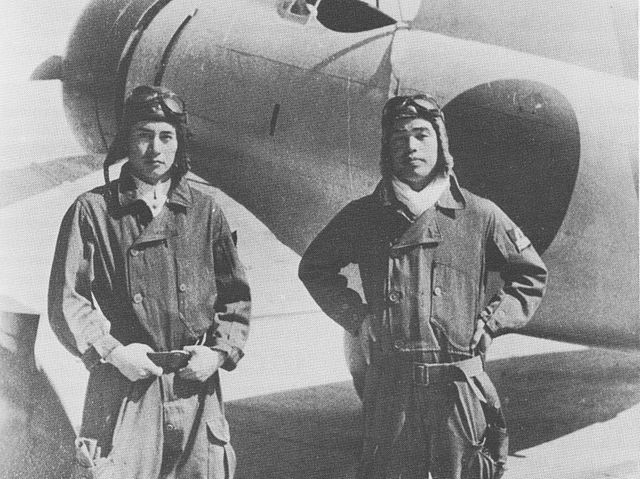
Type 96 Type 4’s ace pilots, IJN Akagi, 1937
Two other aicraft carriers went back to Sasebo, receiving a new air group and especially A5Ms. They returned into combat and gradually, the A5M arrived in larger numbers over China. The A5M1 quickly proved its superiority and gained for Japan air supremacy within a few months. On September 7 over Lake Tang, Captain Igarashi shot down three Hawks in a row. The A5M1 surpassed it by 50 kph. On September 9, the 13th squadron was transferred to the Kungta airfield (later to be camouflaged) and on the 15th, those carried by IJN Kaga were also transferred there.
From Kungta in September 19, a raid was condicted on Nanking, by then the capital of China, with 45 aircraft including twelve A5Ms from the 13th squadron, all equipped with droppable fuel tanks for the first time in combat conditions. Over Nanking, they encountered 23 Chinese fighters, Curtis but also Boeings and Italian Fiats. The Chinese lost seven and the Japanese four, but no A5M1.
The first losses took place on 21 September, from Hosho and Ryuho when attacking Canton. On the way back, short of gasoline, they splashed and sank. In the air, the first was shot down on October 12 when escorting nine bombers covered by 11 A5Ms. In aerial combat, the A5M1 demonstrated a significant advantage against all the best Chinese fighters of the day, the Curtis Hawk II/III and even the British Gladiators. The well trained pilots did wonders with this new fighter, and increased their tally quicky by the end of August, A5M1s shot down more than 330 Chinese aircraft (only 100 for the Chinese) for around 30 Mitsubishi A5M lost.
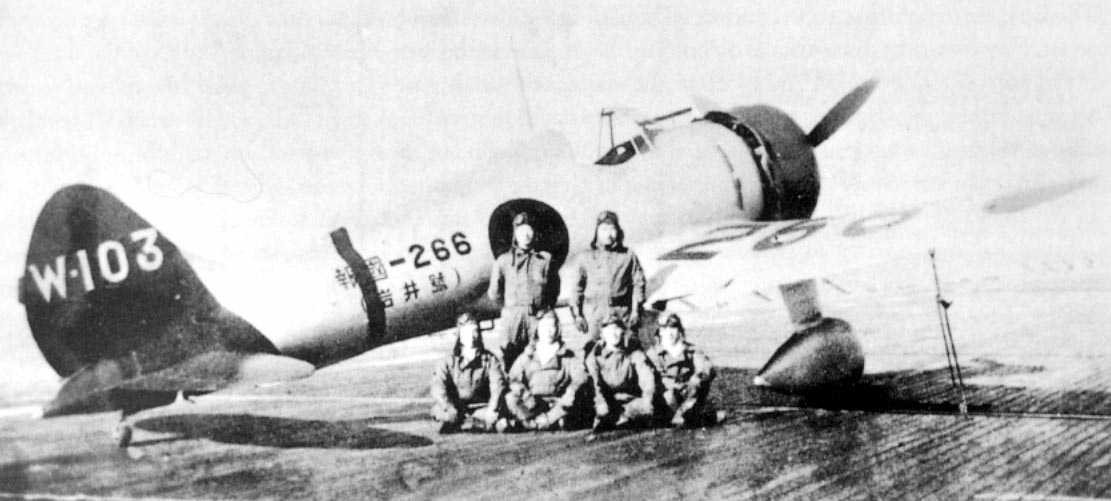
A5M and crew posing, unknwon aircraft carrier, circa 1938 (src warbirdphotographs.com)
As shown by NCO Kasimura, the A5M was light but still sturdy: In aerial combat, he collided with a Chinese Hawk, which fell on top of his A5M severing almost half its tail, but he still managed to made it to Shanghai. However at some point, Soviet pilots and their planes started to appear in the ranks of Chiang Kai-shek’s diverse air force. Formally considered, like the British and American “mercenaries”, as foreign volunteers. In reality they were regular personnel units from the Red Army Air Force, with careful selection and additional training. Theses units even retained their organizational structure, down to the mechanics and officers, and their combat effectiveness significantly exceeded the Chinese. Their I-15bis and I-16 fighters sson appeared as a match for the Japanese A5M, while extra planes and instructors started to benefit Chinese pilots as well.
The A5M2 found its match (1938)
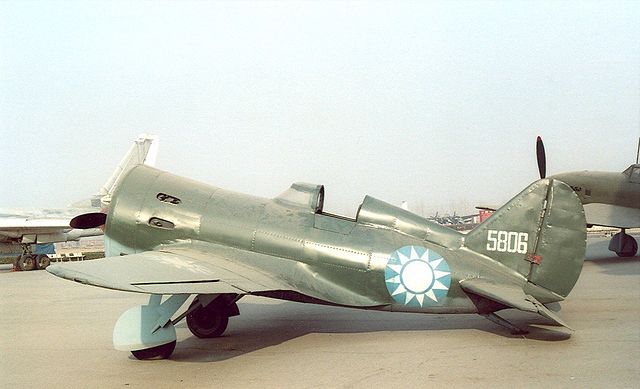
Chinese Polikarpov I-15
The I-15 was superior in armament and survivability, notably due to the pilot’s armor protection. In dogfight, the A5M however still appeared superior. The first duel between the two models started on November 22, 1937, Captain G.M. Prokofiev leading six “ishaks” into a pack of six A5Ms, ending with one A5M down, pilot Miyazaki dead. Both sides significantly overestimated their victory numbers so estimating their respective performances is tricky at best. During the raid on Wuhan on January 18, 1938, 15 Japanese bombers escorted by 11 A5Ms were met by a force of 19 I-15bis and 10 I-16, the Japanese claiming 18, while the Soviet confirmed only 4 while insisting on 14 kill (5 for the Japanese). So this was even. Same, of even worse, on June 29 over Wuhan, in a raid of 18 G3M bombers escorted by 27 A5M fighters, met by 67 enemy fighters (including 25 soviet fighters with Chinese pilots), the Chinese claiming 11 kills for 11 losses of their own. The Japanese claimed to have shot down 51 fighters that day… for two losses.
Soviet pilots considered in their reports the A5M as a serious and worthy adversary. The Chinese Tupolev SB bomber were easily dealt for by the old A4Ns of the fleet, as well as the Ki.10 army fighters. The A5M was used as a fighter interceptor, in a pure air superiority role, in which it still excelled. On the 13 January 1938, thirteen SB led by F.P. Polynin were intercepted by A4N1s, which could not stop them, and the Soviets destroyed the aifield as planned, but they were met when returning by accurate anti-aircraft guns, finished off by eight A5Ms. To escape the onloaught, after two SBs went down, they tried to climb to 6000-7000 m.
The first damaged, crash-landed A5Ms also became trophies of the Chinese army, one being tested by the Chinese, but apparently no reports were sent to the Americans. Two were repaired and sent to the USSR, bu were apparently sabotaged by Japanese agents whle en route, with sugar was poured into the gas tanks.
The A5M2 in combat (1939)

IJN Akagi’s A5M in flight over China, 1937
On October 28, 1938 the soviets started to test intensively one A5M2-Otsu at the Air Force Research Institute and it was soon found it did not work well in the Russian cold and satisfactory tests only started in the spring of 1939 with a first flight on May 13. It had excellent results in stability, maneuverability and was easy to fly, but according to soviet data, still lacked in some maneuverability spheres and in armament, rated lower than the new Soviet fighters in the end. By mid-1939 however the A5M was outdated and Mitsubishi to the point of delivering its legendary A6M.
However the Soviet industry copied some of its features and design solutions like the convenient of the battery in a special container, a compact and reliable Japanese voltammeter, ultraviolet illumination for the dashboard. Later, crucially, the A5M was not present at Khalkhin Gol, but the Ki.27 (“Nate”) instead, about the same type for the Army.
In China, the A5M2 and 3 went on in active combat units in 1939, 1940 and 1941, as long as they were not replaced by more recent models, prioritized for Pacific Operations. The Imperial Japanese Navy used it increasingly on land bases, and by mid-1941, all frontline aicraft deck-based units were supposed to have transitioned. Still, the A5M persisted due to the need to acquire combat experience in a large range of naval aircraft and the nature of the Chinese front. After September 1939, foreign delveries to China marked a step and only went worse in 1940, so oppostion soon dwindled down, making the A5M still relevant on this theater for many years.
At the time, the main IJN aviation base was located in Hankou, and A5Ms were mostly relegated to shore patrols, covering airfields and ports, and escorting bombers inland to some point. In interior China, there were many Japanese Army airfield that took the bulk of operations. By the start of 1940, two IJN air groups operated in China, the 2nd and 3rd Kokutai including more than 50 A5Ms while aircraft carriers retained them as primary fighter off the coast since the end of 1938.
Combat debut of the A5M4

Japanese ace Kashimura’s personal A5M4 in flight, 9 December 1937
The A5M4 production started at the end of 1938 and arrived in active units in China in early 1939. Still was very close to the A5M2-Otsu, it had a new visor in the cockpit, and a powerful radio among other details. Moreover, it was equipped with the new “Kotobuki” 41 engine, delivering 785hp. With new underwing suspended tanks with greater capacity, its range jumped to 648 km. In parallel with the A5M4 the training two-seater A5M4-K was also produced, with an instructor’s seat and cockpit located behind the main one, both open. The Nakajima plant in Nagoya ceased production in 1940 and Omur took charge of the rest of the production, mostly the A5M4-K and even a few at Watanabe Tekkose until 1941. At the end of the 1941, the Japanese acquired bases in Indochina and soon the 14th squadron, equipped with the A5M4 arrived there. From there, raids against Kunming in southern China commenced.
By mid-1941 the 12th and 14th air detachments (Kokutai) as well new aircraft carriers like the Shokaku class were completely re-equipped with the new A6M. A5Ms were transferred to local air defense units of coastal bases and training units.
The Mitsubishi A5M in WW2
 By December 1941, the IJN listed only 193 A5Ms in active service, of which 144 were in second line home islands bases, deployed to provide air cover for local defense, above the naval bases in Sasebo, Omura, Ominato and Takao. However a “special air group” was mustered by the fleet to participate in the invasion of Malaya, where local air opposition was judged weak, and squadrons deployed on light aircraft carriers Soho (11 A5M), Ryuho (22), Zuiho (16). US intel assigned the A5M4 the codename “Claude”. IJN Ryuiho’s fighters (Rear Admiral Kakuji, 4th Aircraft Carrier Division) covered the landing in the Philippines as well, in the Davao region and Mindanao, that the A6M stationed in Taiwan could not reach. Ryuiho’s A5M4s also soldiered in the Dutch East Indies. By February-March 1942 Ryuyho also made strikes in the Bay of Bengal.
By December 1941, the IJN listed only 193 A5Ms in active service, of which 144 were in second line home islands bases, deployed to provide air cover for local defense, above the naval bases in Sasebo, Omura, Ominato and Takao. However a “special air group” was mustered by the fleet to participate in the invasion of Malaya, where local air opposition was judged weak, and squadrons deployed on light aircraft carriers Soho (11 A5M), Ryuho (22), Zuiho (16). US intel assigned the A5M4 the codename “Claude”. IJN Ryuiho’s fighters (Rear Admiral Kakuji, 4th Aircraft Carrier Division) covered the landing in the Philippines as well, in the Davao region and Mindanao, that the A6M stationed in Taiwan could not reach. Ryuiho’s A5M4s also soldiered in the Dutch East Indies. By February-March 1942 Ryuyho also made strikes in the Bay of Bengal.
Soon Japanese coquest needed protection and airfields, either captured or create needed extra fighters, the best ones (A6Ms) being reserved fir the Navy. So air cover was needed, and the hastily newly formed air defense units were provided stock A5Ms: The 4th squadron in Rabaul, 1st and 6th in the Marshall Islands (Luoti, Taloa and Palau airfields) were equipped with the “Claude”. They were still actively used until April 1942, after which A6M were in suffocent numbers to be detached in these Navy bases. Some local airfield, such as Buin Island, retained their A5M well until September 1943.
Japan local defence airfield were considered too far from the front to be equipped with modern fighters and ficused instead of training or carrying out local uneventful patrols, until at least in April 1942, bombers from the Dolittle raid striking the Tokyo area were nearly intercepted by three A5M4s from the Kasumigaura squadron, patrolling nearby, but at the time, they failed to identify the American planes, assuming these were Japanese.
The last pacific battles
The A5M took part in the battle in the Coral Sea, on May 7, 1942: Two A5Ms and four A6Ms flew from IJN Soho as a CAP (the escort fighters sent in attack were all A6Ms). They interecpted dive and torpedo bombers of from Yorktown and Lexington and managed to shot down three, but their carrier was hist and sunk in 20 minutes. Having nowhere to land -they splashed although one A5M4 managed to crash land on nearest island. On July 14, 1942 the auxiliary aircraft carrier “Kasuga Maru” (a rebuilt liner transformed as an assault ship) had onboard 11 A6M and 14 A5Ms.
By the end of 1942, all A5M units in the home islands were now relegated to training units and flight schools. By the end of 1944, A5M4 and A5M4-K were still in number, althugh by that point, worn-out machines versed into kamikaze detachments with bomb suspended under the fuselage. They saw action off the coast of Japan and especially over Iwo Jima in early 1945.
References
The Illustrated Encyclopedia of Aircraft. London: Aerospace Publishing.
Taylor, Michael J. H. (1989). Jane’s Encyclopedia of Aviation. London: Studio Editions.
Bond, Charles R.; Anderson, Terry H. (1984). A Flying Tiger’s Diary. College Station, Texas: Texas A&M University.
Francillon, Ph.D., René J. Japanese Aircraft of the Pacific War. London: Putnam & Company Ltd., 1970 (second edition 1979).
Green, William (1961). Warplanes of the Second World War, Volume 3 Macdonald & Co.
Green, William; Swanborough, Gordon “The Zero Precursor, Mitsubishi’s A5M”. Air Enthusiast. No. 19.
Januszewski, Tadeusz (2003). Mitsubishi A5M Claude. Sandomierz, Poland/Redbourn Mushroom Model Publications.
Mikesh, Robert C.; Abe, Shorzoe (1990). Japanese Aircraft, 1910-1941. Putnam Aeronautical.
Mondey, David, ed. (1996). The Concise Guide to Axis Aircraft of World War II. Chancellor.
Sakaida, Henry (1998). Imperial Japanese Navy Aces, 1937-45. Osprey Publishing.
Unknown. “Handbook of Japanese Aircraft 1910-1945 Model Art Modeling Magazine.
Unknown. Mitsubishi Type 96 Carrier Fighter/Nakajima Ki-27 Kojinsha Publishing
Unknown. Type 96 Carrier Fighter (Famous Airplanes of the World #27) Bunrindo Publishing
wiki
The A5M on airwar.ru
j-aircraft.com
A Flying Tiger’s diary, by Bond, Charles R; Anderson, Terry H., 1946
On militaryfactory.com
On historyofwar.org
Japanese Aircraft of World War II (Technical Guides): 1937–1945
A5M claude by Dariusz Paduch on kagero.pl
On combinedfleet.com
On aviastar.org
On scalemates.com

Mitsubishi KA-14, the very first inverted gull wing prototype, 1935. Six were built and modified (from the second one).

Mitsubishi Ki-18, land-based version for Army with a 410 kW (550 hp) Kotobuki 5 engine.

Mitsubishi Ki-33, two prototypes for the Army with a new engine and modified cockpit.

Mitsubishi A5M3a prototype with the 448 kW (601 hp) Hispano-Suiza 12 Xcrs engine

Mitsubishi A5M1 Kashimura China 1937

Mitsubishi A5M1 Buntai China 1937

Mitsubishi A5M1 PO3c, Shanghai China March 1938

Mitsubishi A5M1 POC3c Nanchang July 1938
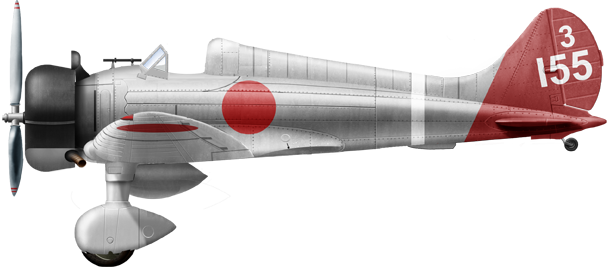
Mitsubishi A5M2a late 12th Kokutai, 1939

Mitsubishi A5M2b, 12th Kokutai (captured in China, 1939)

Mitsubishi A5M2b early type, Hyawata Kokutai Ibaraki 1940

Mitsubishi A5M2a late 12th Kokutai, 1939
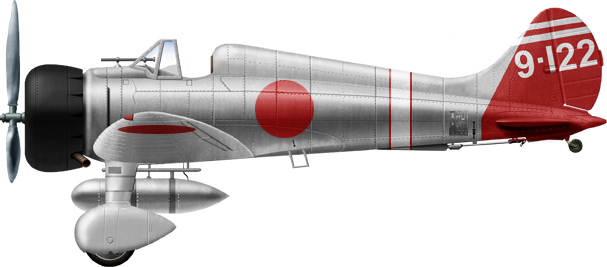
Mitsubishi A5M2b late type, 14th Kokutai (captured)

Mitsubishi A5M2b, 14th Kokutai 1939

Mitsubishi A5M4, IJN Soryu 1940

Mitsubishi A5M4, IJN Soryu 1941

Mitsubishi A5M4, IJN Zuiho February 1942

A5M2b, 4th Tainan Kokutai Lakunai Air Base New Britain April 1942

A5M4 14th Kokutai Haiku Air Base South China October 1940

A5M4 381 Kokutai Tebrau Malaysia 1945

A5M4 Ota 116, Omurai Kokutai, Nagasaki August 1945
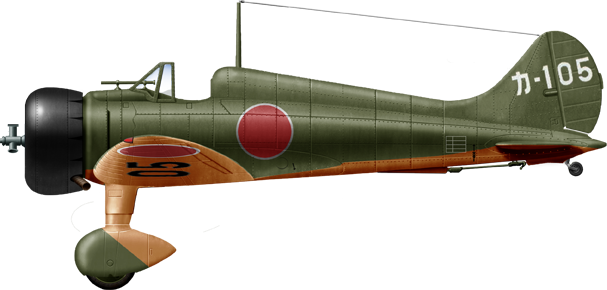
Mitsubishi A5M4 single seat advanced trainer, Kasumigaura Kojutai, Japan 1944
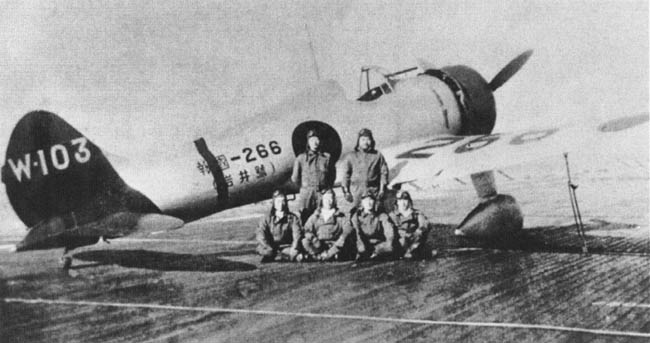
A5M

A5M Claude Kokutai ?

A5M4 Hosho early 1942

A5M2b 113-2

A5M2b 3-165

A5M4 green

A5M4 Used for training

A5M4 green

A5M “Claude”

A5M4 12th Kokutai

A5M

A5M


 Latest Facebook Entry -
Latest Facebook Entry -  X(Tweeter) Naval Encyclopedia's deck archive
X(Tweeter) Naval Encyclopedia's deck archive Instagram (@navalencyc)
Instagram (@navalencyc)





 French Navy
French Navy Royal Navy
Royal Navy Russian Navy
Russian Navy Armada Espanola
Armada Espanola Austrian Navy
Austrian Navy K.u.K. Kriegsmarine
K.u.K. Kriegsmarine Dansk Marine
Dansk Marine Nautiko Hellenon
Nautiko Hellenon Koninklije Marine 1870
Koninklije Marine 1870 Marinha do Brasil
Marinha do Brasil Osmanlı Donanması
Osmanlı Donanması Marina Do Peru
Marina Do Peru Marinha do Portugal
Marinha do Portugal Regia Marina 1870
Regia Marina 1870 Nihhon Kaigun 1870
Nihhon Kaigun 1870 Preußische Marine 1870
Preußische Marine 1870 Russkiy Flot 1870
Russkiy Flot 1870 Svenska marinen
Svenska marinen Søværnet
Søværnet Union Navy
Union Navy Confederate Navy
Confederate Navy Armada de Argentina
Armada de Argentina Imperial Chinese Navy
Imperial Chinese Navy Marinha do Portugal
Marinha do Portugal Mexico
Mexico Kaiserliche Marine
Kaiserliche Marine 1898 US Navy
1898 US Navy Sovietskiy Flot
Sovietskiy Flot Royal Canadian Navy
Royal Canadian Navy Royal Australian Navy
Royal Australian Navy RNZN Fleet
RNZN Fleet Chinese Navy 1937
Chinese Navy 1937 Kriegsmarine
Kriegsmarine Chilean Navy
Chilean Navy Danish Navy
Danish Navy Finnish Navy
Finnish Navy Hellenic Navy
Hellenic Navy Polish Navy
Polish Navy Romanian Navy
Romanian Navy Turkish Navy
Turkish Navy Royal Yugoslav Navy
Royal Yugoslav Navy Royal Thai Navy
Royal Thai Navy Minor Navies
Minor Navies Albania
Albania Austria
Austria Belgium
Belgium Columbia
Columbia Costa Rica
Costa Rica Cuba
Cuba Czechoslovakia
Czechoslovakia Dominican Republic
Dominican Republic Haiti
Haiti Hungary
Hungary Honduras
Honduras Estonia
Estonia Iceland
Iceland Eire
Eire Equador
Equador Iran
Iran Iraq
Iraq Latvia
Latvia Liberia
Liberia Lithuania
Lithuania Mandchukuo
Mandchukuo Morocco
Morocco Nicaragua
Nicaragua Persia
Persia San Salvador
San Salvador Sarawak
Sarawak Uruguay
Uruguay Venezuela
Venezuela Zanzibar
Zanzibar Warsaw Pact Navies
Warsaw Pact Navies Bulgaria
Bulgaria Hungary
Hungary

 Bundesmarine
Bundesmarine Dutch Navy
Dutch Navy Hellenic Navy
Hellenic Navy Marina Militare
Marina Militare Yugoslav Navy
Yugoslav Navy Chinese Navy
Chinese Navy Indian Navy
Indian Navy Indonesian Navy
Indonesian Navy JMSDF
JMSDF North Korean Navy
North Korean Navy Pakistani Navy
Pakistani Navy Philippines Navy
Philippines Navy ROKN
ROKN Rep. of Singapore Navy
Rep. of Singapore Navy Taiwanese Navy
Taiwanese Navy IDF Navy
IDF Navy Saudi Navy
Saudi Navy Royal New Zealand Navy
Royal New Zealand Navy Egyptian Navy
Egyptian Navy South African Navy
South African Navy






























 Ukrainian Navy
Ukrainian Navy dbodesign
dbodesign
The information presented here is very thorough. I was wondering if you would know where I can obtain full scale blueprints and technical drawings of the A5M plane. I am an rc airplane pilot and would like to scratch build this plan. I would like full size plans with dimensions so I can transfer them using my drawing bard at home and reduce the scale that is easily manageable. If you can provided me with a reference of whwere I can obtain a set of blueprints I would greatly appreciate it.
Thank you,
Scott Lindsay
Hi Scott, thx ! for ships i’m better aware of the sources, but for aircraft it’s trickier. If i were in your shoes i’ll check RC forums. I had a friend back in the days which made flying replicas from scratch and he had such go-to source.